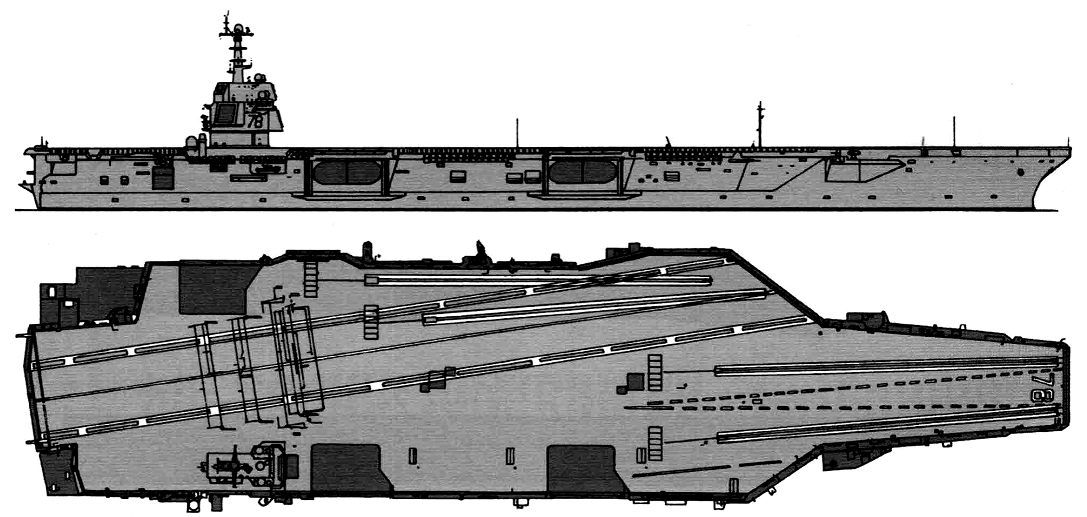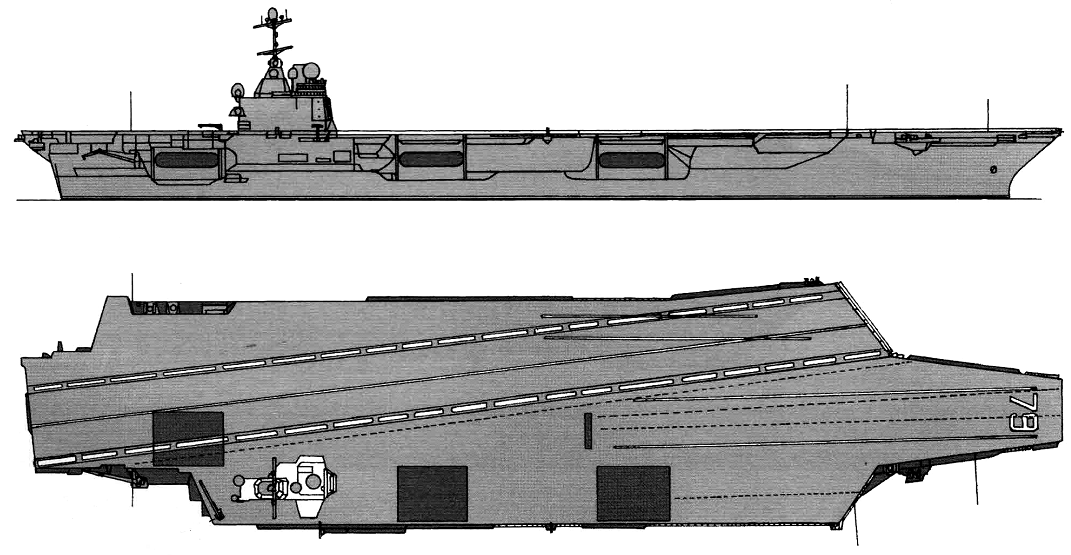

Gerald R. Ford

John F. Kennedy
| No | Name | Yard No | Builder | Laid down | Launched | Comm | Fate |
| CVN78 | Gerald R. Ford | Northrop Grumman SB, Newport News | 14.11.2009 | 11.10.2013 | 22.7.2017 | in service (2020) | |
| CVN79 | John F. Kennedy | Northrop Grumman SB, Newport News | 22.8.2015 | 29.10.2019 | 2025 | building (2020) | |
| CVN80 | Enterprise | Northrop Grumman SB, Newport News | 2021 | 2025 | 2028 | building (2020) | |
| CVN81 | Doris Miller | Northrop Grumman SB, Newport News | 2026 | 2030 | 2033 | authorized (2020) |
|
Displacement standard, t |
|
|
Displacement full, t |
101600 |
|
Length, m |
332.8 |
|
Breadth, m |
40.8 wl 80.8 fd |
|
Draught, m |
12.4 |
|
No of shafts |
4 |
|
Machinery |
4 sets Westinghouse geared steam turbines, 2 General Electric S9G nuclear reactors |
|
Power, h. p. |
840000 (combined with electric power) |
|
Max speed, kts |
31 |
|
Fuel, t |
nuclear |
| Endurance, nm(kts) | practically unlimited |
|
Armour, mm |
presumably belt summary: 135, flight deck: 45, hangar deck: 50, main deck: 64 + Kevlar protection of vital spaces |
|
Armament |
2 x 8 ESSM SAM (16 RIM-162), 2 x 21 RAM SAM (42 RIM-116A), 3 x 6 - 20/76 Mk 15 Phalanx, 4 x 1 - 12.7/90, ~70 aircraft (F/A-18, F-35 fighters, EA-18 ECM planes, E-2 EW planes, C-2 cargo planes, CV-22 tilt-rotor craft, AH-1, CH-53, HH-60, MH-53, MH-60, UH-1, UH-60 helicopters) |
| Sensors |
SPY-3, SPY-4, SPS-74(v)2, 4x Mk 95, 3x Mk 90 radars, SLQ-32(v)4, SLQ-20B ECM suites, 8x Mk 36 SRBOC decoy RL, SLX-1 anti-torpedo system, CEC USG-2, SSDS Mk 2, ICDS, JDTS, POST, CVIC, ICDS CCS |
|
Complement |
4539 |
Aircraft facilities (fd - 22,268 m², ha - 6,860 m² / 55,357 m³): Flight deck: 331.7 x 76.8m. Hangar: 208.5 x 32.9 x 8.07 m. There are 4 deck-edge elevators (47.6t, 21.4/25.9 x 15.9m). There are 4 EMALS catapults. Aircraft fuel stowage: 12 869 000 l of JP-5 jet fuel. Aviation ordnance stowage is 1954t.
| Year | fighters | recon, EW, ECM | helicopters |
| 2018 (plan) | 75 F/A-18E/F, F-35C | 4 EA-18G, 4 E-2D | 6 MH-60R/S |
Project history: CVN(X), later- CVN21 program. The class has an enhanced nuclear propulsion system incorporating new reactor and new electrical plant design that provides increased electrical power generation capability over the previous ships and allows electric-powered equipment to replace the previous steam-powered auxiliary systems. The CVN78 class has 3.5 times the electrical power generation capability and 25% more freshwater generation capability than the CVN68 class. The steam catapults were replaced with an Electro-Magnetic Aircraft Launch System (EMALS) to launch planes via a linearmotor drive. EMALS offers greater launch control and precision, paving the way for both heavier and lighter aircraft and increased weapon loads, even with less available wind. These advances permit the launch and recovery of a more diverse range of aircraft and UAVs. EMALS also applies less force on airframes during launch, and advanced arresting gear allows increased weight. These and other enhancements permit a 33% increase in sortie rates for the CVN78 over the CVN68 and CVN71, expected 160 sorties per day instead of 120 with the ability to surge to more than 270 sorties per day for short periods. Additionally, the ship's command and control facilities are reconfigurable to permit greater flexibility during different missions.
The size of flight deck is increased for enhanced flight-deck efficiency. New electromagnetic weapon elevators have been added with linear motors instead of cabling. Ships can be armed with octuple Mk 56 ESSM VLS launchers instead of standard Mk 29.
Ship protection (presumably): Armour protection consists of 3 protected decks (flight, hangar and lower decks) and vertical armour (side armour and longitudinal bulkheads). Also there is a box-shaped protection of magazines and vital zones. Underwater protection includes 5 longitudinal bulkheads (4th bulkhead is 76mm-thick). Bottom is also protected. Also vital spaces have 63mm Kevlar protection.
Modernizations: None.
Naval service: No significant events. Gerald R. Ford is expected to be deployed in 2020.

Gerald R. Ford 2016
© Navypedia, 2017-20